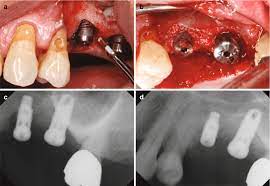The Diode Laser as an Adjunct to Implant Treatment
Diode laser is a useful adjunct to uncover dental implants or esthetically recontour the gingival margin in soft-tissue modification. It can provide better safety than electrosurgery, as they maintain a temperature profile within the safety zone of bone and do not cause tissue shrinkage, which can affect the esthetic outcome. One clear advantage of diode laser over the use of a scalpel or tissue punch is the ability to provide simultaneous cutting and coagulation (hemostasis). This has a further benefit of allowing immediate impressions to be taken without site bleeding affecting the accuracy of the capture of the soft-tissue contours and position.
Diode laser is becoming increasingly utilized in dental practices, both because its less expensive to implement than CO2 and ND:YAG laser and due to the wide range of effective treatments afforded by these devices. Diode laser such as the LunDent (Lunray Laser) provides sufficient power to modify soft tissue in and around the dental implant for uncovery or alteration of the gingival margin to improve the esthetics while operating within the temperature range recommended to avoid negatively affecting bone around the implant. Additionally, coagulation can be controlled, allowing impressions to be taken at the time of uncovery without fear of blood interfering with the accuracy of the gingival aspect of the impression. Because, unlike with an electrosurgery unit, cutting the tissue with the diode does not affect deep layers of cells in the gingiva, tissue shrinkage is not a concern. Therefore, it is not necessary for gingival healing to be complete before impressions can be taken.
There are several of the advantages of using diode laser as an adjunct to implant treatment. Diode laser is an efficient and effective option when modifying soft tissue, uncovering dental implants, or esthetically recontouring the gingival margin. Unlike electrosurgery, it maintains a temperature profile within the safety zone of bone and do not cause tissue shrinkage, which can affect the esthetic outcome. When compared with traditional methods such as a scalpel or tissue punch, diode laser has the advantage of offering hemostasis, meaning impressions can be taken immediately without site bleeding affecting the accuracy of the capture of the soft tissue contours and position. This reduces chairtime and improves the efficiency of implant procedures while offering excellent outcomes.
